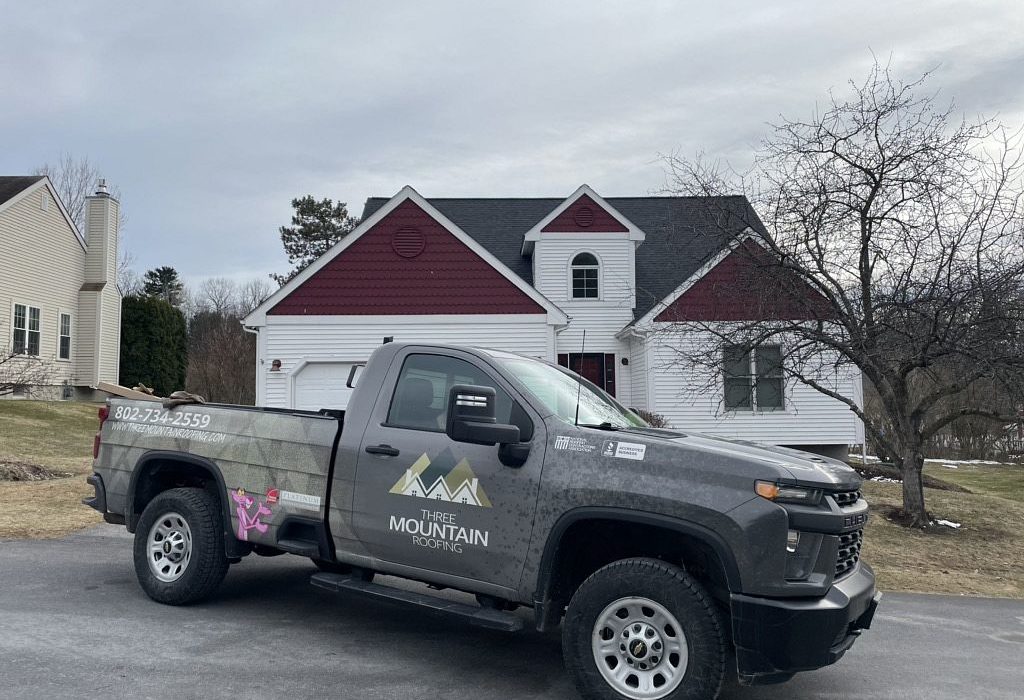Small Delays, Big Consequences
Owning a home comes with a never-ending to-do list. Some projects feel urgent—like a broken furnace in winter or a burst pipe—and others, like a worn-out roof, might feel easy to postpone. After all, if the ceiling isn’t leaking yet, it can’t be that serious, right? Unfortunately, this is where many homeowners make a costly mistake.
Delaying a necessary roof replacement isn’t just about aesthetics or property value. It can quietly lead to much more serious damage that affects your home from top to bottom. When your roof starts showing signs of wear, whether it’s missing shingles, sagging in certain areas, or you’re seeing granules in the gutters, it’s already sending a message: it’s time to take action.
A roof plays a critical role in protecting your home from the elements. It shields everything beneath it: your walls, insulation, structure, and most importantly, the people inside. When that protection weakens, even just a little, your home becomes vulnerable to water intrusion, mold, insulation breakdown, and eventual structural damage.
When Roof Trouble Becomes a Structural Problem
Your roof isn’t just there to keep the rain out. It’s part of your home’s structural system. Over time, as roofing materials weaken, so does their ability to support weight and withstand weather. If your roof has already endured years of freeze-thaw cycles, sun exposure, and storms, it may be hiding problems beneath the surface.
Rotting decking, deteriorated flashing, and compromised rafters can lead to sagging areas that put strain on the rest of your home’s frame. In severe cases, neglected roof damage can affect load-bearing walls or even the foundation. It’s not just about keeping your belongings dry. Delaying a roof replacement can threaten the long-term stability of the entire house.
Moisture also has a tendency to travel. A small leak may originate in the attic but eventually seep into wall cavities or down into the basement. The hidden spread of water damage can ruin insulation, electrical systems, and flooring—all of which add significant costs and stress to what could have been a straightforward roofing project.
The Cost of Waiting: It’s More Than You Think
Some homeowners delay roof work because of the cost, but ironically, waiting often ends up being the more expensive option. A timely roof replacement might cost a set amount today, but the longer you postpone it, the more likely it is that additional repairs will pile up. What could have been a $10,000 replacement might turn into a $25,000 full-roof-and-interior restoration project.
Then there are the rising utility bills. A compromised roof can allow air to escape, forcing your HVAC system to work harder to maintain temperature. Poor insulation and unseen moisture damage can drive up energy costs year-round, draining your budget little by little.
Delays also complicate insurance claims. Most policies have clauses requiring homeowners to maintain their property. If your provider determines that you allowed a known issue to worsen, they may deny part or all of your claim. That means if the roof finally fails during a storm and damages your home’s interior, you could be stuck covering the full cost out of pocket.
Delaying Your Roof Replacement Can Hurt Resale Value
If you’re thinking about selling your home in the next few years, replacing an aging roof may not be optional—it may be necessary. One of the first things prospective buyers (and their inspectors) notice is the condition of the roof. If your shingles are curling, there are signs of water damage, or the roof simply looks outdated, it can quickly become a sticking point during negotiations.
Buyers today are more informed and cautious than ever. A roof in poor condition often triggers red flags, not only for the potential cost of replacement but for what else might be lurking beneath the surface. Even if the rest of your home is well-maintained, a failing roof can lead buyers to believe there are bigger problems hiding behind the walls.
Worse, some lenders may require the roof to be replaced before a mortgage can be approved, especially for FHA or VA loans. That means you may be forced to replace the roof mid-sale, under pressure, on a tight deadline, and possibly at a premium.
On the flip side, investing in a roof replacement before listing your home can significantly boost curb appeal and buyer confidence. A new roof suggests the home has been properly cared for, and it’s one less thing the buyer will have to worry about. It can help your home sell faster and for a better price, making it a smart investment both structurally and financially.
When it comes to your roof, time isn’t always on your side. What starts as a small issue can grow into a much bigger and more expensive problem if left unchecked. The damage might not be immediately visible, but it’s happening quietly behind the scenes, weakening your home’s protection and increasing the risk to your finances.
If your roof is past its prime or has been showing signs of damage, it’s worth getting a professional inspection. A trusted contractor can assess its condition, identify any issues that need urgent attention, and help you plan next steps—whether that means roof repairs or a full replacement. Postponing a roof replacement might feel like a short-term money-saver, but in the long run, it’s one of the most costly decisions a homeowner can make. Taking action early protects not just your home’s structure, but your peace of mind.


